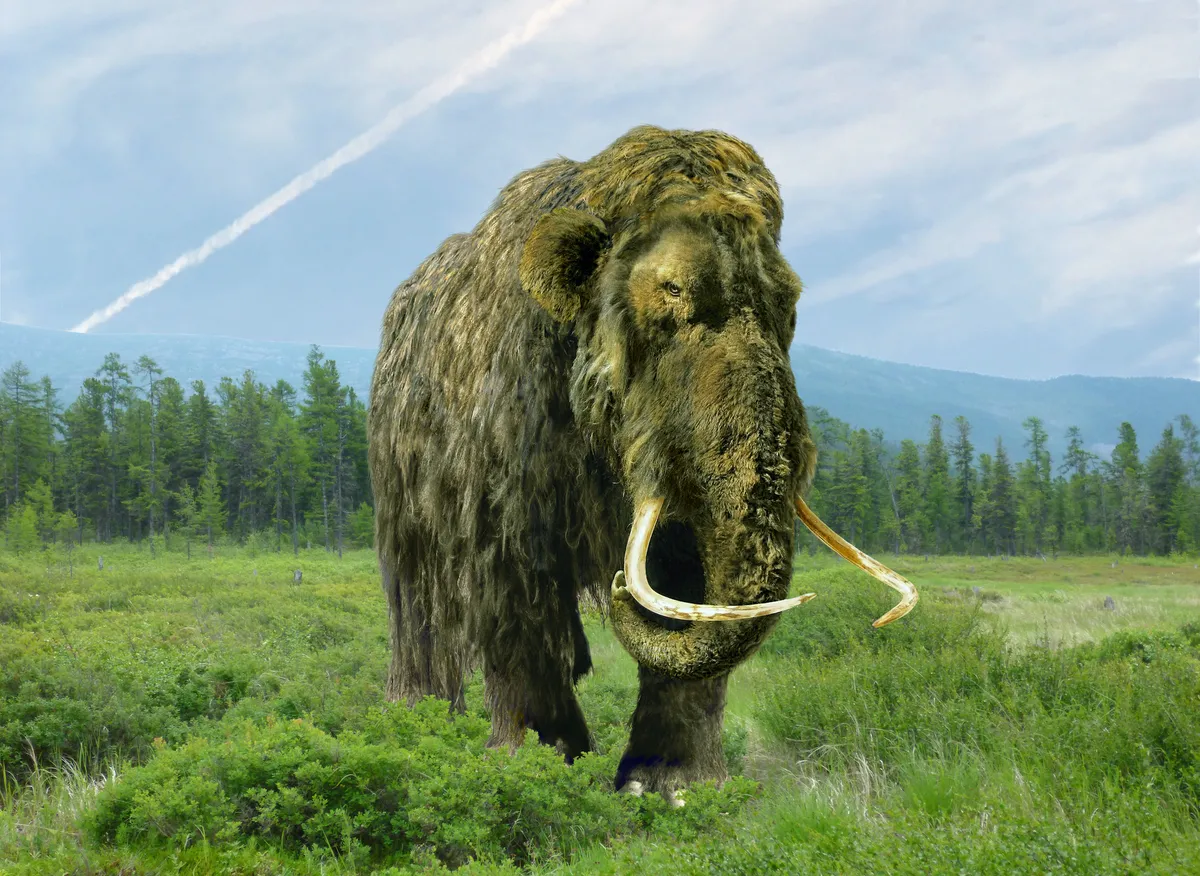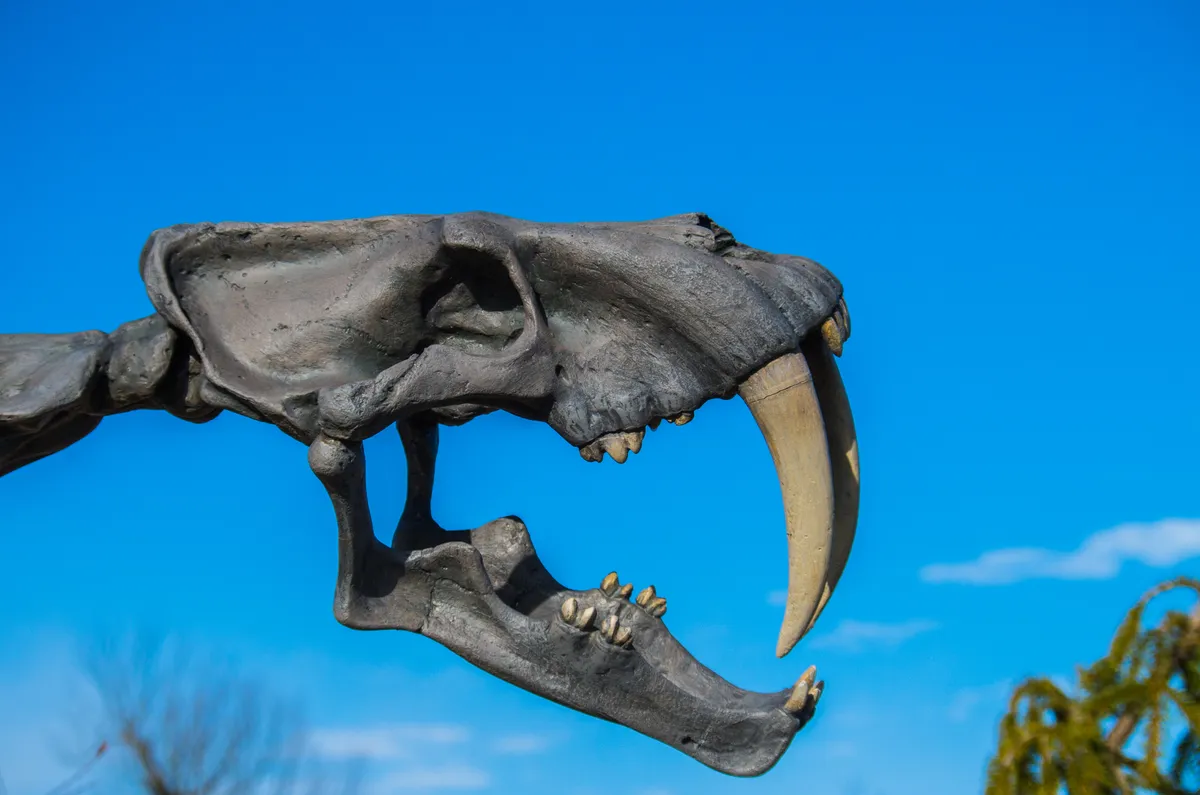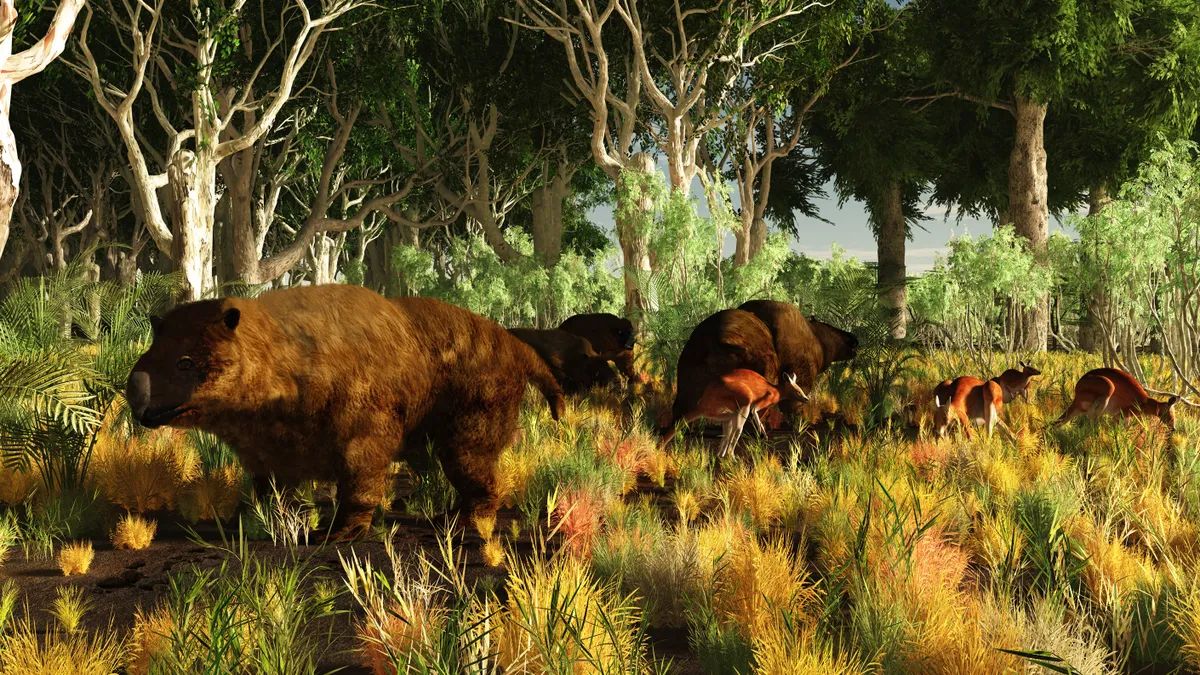What we know as the Ice Age, the last long period during which global temperatures dropped dramatically and the polar ice expanded to cover much of the earth, is more properly called the Last Glacial Period (as there have been multiple ice ages).
It started around 115,000 years ago and lasted for over 100,000 years. In that time many animal lineages rose and fell. In particular, it is known that many large mammal species went extinct during the transition from the Ice Age to the present interglacial period (from around 50,000 to 5,000 years ago).
These extinctions are thought to have occurred due to a combination of a quickly changing climate, changing vegetation and increases in human hunting. These megafauna included some truly huge and charismatic animals, from the iconic woolly mammoth to huge cave bears, to giant sloths standing nearly 12 feet tall! In this list you will find out about some extraordinary (now extinct) animals that lived during the age of ice and snow.
10 now-extinct animals from the Ice Age
1. Neanderthals
Our own species, Homo sapiens, emerged about 300,000 years ago, so persisted through the last ice age. We were not the only ancient humans around, however. Surviving the frigid temperatures along with us were our evolutionary cousins, the Neanderthals. This species of hominid emerged at a similar time to us but went extinct around 40,000 years ago – during the Ice Age.
Theories as to why they went extinct vary, from outcompetion from or diseases introduced by Homo sapiens to assimilation into the human gene pool. However, recent theories suggest that the primary driver might have been climate change. It is thought that despite behavioural and biological adaptations to the cold they simply struggled to survive the frigid conditions and lack of available food. How we survived and they didn’t is an interesting question.
2. Woolly mammoths (Mammuthus primigenius)

Probably the most well-known of all Ice Age animals is the woolly mammoth (in part thanks to the film character Manny!). Woolly mammoths lived from about 300,000 years ago up until about 10,000 years ago. The appearance of these elephant-sized animals is perhaps the best known of any prehistoric creature, due to the many frozen specimens that have been found, with soft tissue preserved.
With their thick coat of hair, large fat reserves, and specially adapted 'antifreeze' blood they were very well adapted to the cold. They were also very important to the survival of ancient humans throughout the Ice Age; their coats, meat and bones provided valuable sources of warmth, food and building materials for homo sapiens and Neanderthals alike.
3. Giant ground sloth (Megatherium americanum)

These beasts were very different to the sloths we know and love today! Standing at a whopping 3.7m when up on hind legs and weighing up to four tonnes (as opposed to the 5kg of a modern sloth), they were truly colossal.
With its ability to walk on its hind legs, it was in fact the largest bipedal mammal of all time. They lived in the woodlands and grasslands of South America, and fossils have been found dating back from around 400,000 years ago to 10,000 years ago. Despite its huge fearsome claws, it was actually a vegetarian, feeding on leaves and grasses.
4. Cave bears (Ursus spelaeus)

Slightly more modest in size, though still pretty massive, was the cave bear. Weighing in at between 400 and 1,000kg, the largest cave bears were comparable in size to modern-day polar bears. They could be found across Europe and Asia, including in the UK.
We have a very good idea of what they looked like, as in 2020 a perfectly preserved specimen was found in the Russian Arctic, its remains revealed by melting permafrost. Even its teeth and nose were intact.
The specimen was dated to between 22,000 and 39,500 years old, living towards the end of the time of the cave bears, who are thought to have gone extinct 24,000 years ago. It is thought that hunting by humans, as well as competition with them over caves, may have contributed to their disappearance.
5. Dire wolf (Canis dirus)

That’s right, dire wolves are not just fictional pets from Game of Thrones, they were real animals. However, despite the name, and a lot of physical similarities, recent genetic analysis has revealed that they were not actually very closely related to grey wolves at all and were relatively closer to African jackals.
These canids were seemingly a common feature of the American Late Pleistocene landscape (approx. 250,000 to 13,000 years ago), roaming the grasslands, plains, and woods and preying on megafauna including giant ground sloths. There is almost an overabundance of fossil data on this species, with over 4,000 individuals excavated from California’s La Brea tar pits alone.
6. Sabre Tooth Cat (Smilodon genus)

The La Brea tar pits have also been responsible for giving us insights about another iconic Ice Age predator – the sabre tooth cat. More than 3,000 fossilised individuals have been pulled from the ooze, and their teeth in particular have been a valuable source of information about their diets and lifestyle.
Scientists have been able to examine the wear patterns on their iconic gnashers to determine that rather than bringing down very large prey like bison on the open plains, as was previously thought, they most likely fed primarily on smaller forest-dwelling animals like tapirs and deer. They were ambush predators similar to many modern-day big cats.
7. Irish elk (Megaloceros giganteus)
As you can probably guess from the scientific name, this species of deer was BIG. They stood at over 1.8m tall at shoulder height and had the largest antlers of any known deer, extinct or living. These colossal antlers must have been something to behold, spanning up to a whopping 3.5 metres.
Despite the name, this elk was not restricted to Ireland, but some of the most well-preserved fossil specimens have been found there. The most recent remains come from western Russia and have been dated to approximately 7,700 years ago – seemingly another victim of the megafaunal extinction event that occurred around the end of the Ice Age.
8. Giant Beaver (Castoroides genus)
Continuing the theme of larger versions of modern-day animals is the giant beaver, with an average length of about 1.8m. Its teeth were large to match, with some reaching up to 15cm, about the size of a hot dog.
There is no definitive evidence that they built dams as modern beavers do, but it is plausible that these immense incisors could have been used for woodcutting. What we do know is that they had smaller, smoother brains than modern-day beavers, which could indicate that they had less behavioural and social complexity.
9. Megalania (Varanus priscus)
So far this list has focused on mega-mammals, but what about other Ice Age species? Understandably it was hard for cold-blooded species like reptiles to survive frozen ice age temperatures across much of the globe, but in fact, not all of the world was icy, and some places remained habitable.
One of these places was Australia, where giant reptiles ruled. These included huge land-living crocodiles, massive snakes and Megalania – a truly monstrous relative of the Komodo dragon. This monitor lizard reached an estimated length of 7 metres and was a key land predator, at the very top of the food chain.
It has been suggested that the loss of its mega-reptile predators has left the Australian ecosystem out of kilter, allowing introduced mammals to reign unchecked.
10. Diprotodon (Diprotodon genus)

Another feature of the Australian Ice Age landscape was not a reptile, but a huge marsupial mammal – in fact, the largest marsupial to have ever lived. Diprotodon measured an estimated 4m head to tail tip and weighed as much as 3,500 kg, dwarfing the current largest marsupial, the red kangaroo, which checks in at a mere 2.7m and 90kg.
Their closest modern relatives are actually much smaller: wombats and koalas. It also has the distinction of being the only known seasonally migrating marsupial, trekking very far in search of food and watering holes.
Main image: Artist's impression of a sabre tooth cat. © Daniel Eskridge/Getty
